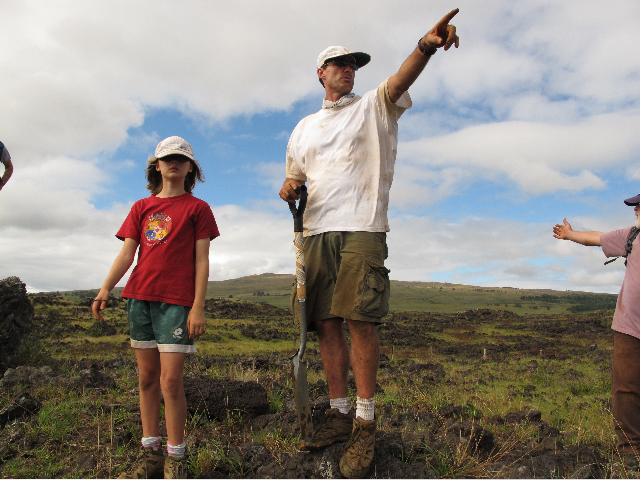By Jessica Tulp
Thegn Ladefoged is a man with a home here in New Zealand but work that stretches across the world. One particular project has seen him travel to Easter Island to carry out an investigation on land use and its effects on the Rapa Nui population over time. Stemming from previous work in Hawaii, Thegn used methods developed to look at soil productivity and applied these to Easter Island. Thegn’s work emulates the goals of Te Pūnaha Matatini, working across multiple disciplines with ecologists, soil scientists and computer modellers.
As with any research done on Easter Island (Rapa Nui), this project was done in response to the issue of the “collapse”. Many researchers believe that unchecked population growth of the Rapa Nui society in a fragile environment was the reason behind its collapse, however this idea has recently been put into question with evidence suggesting that the extreme changes within the Rapa Nui society occurred only after European contact in AD 1722.
Thegn and his team looked at the productivity of the island to see if they could see any changes prior to the collapse. According to the work of previous researchers, they should have expected to find that nothing had changed prior to European contact in terms of productivity and land use, however this was not the case! Through a whole bunch of soil samples and weather stations, they carefully collected climate data from across the island for about three years. Looking at this data they can see where is fertile, where is not, and how this has changed over time. The fertility of the soil in any one place is related to the age of the substrate and the amount of rainfall in that area. The older the substrate, the less rainfall it can handle before it leeches away the nutrients in the soil.
In a recent publication by Thegn and his team in PNAS, they characterised different areas of Rapa Nui after analysing the data they had collected. Using obsidian hydration dating they were able to date a number of artefacts they found and discover a clear pattern of land use. Three main study areas were covered: one which was a very dry area, a second which was a wet area but with bad soils, and a third area, the “Goldilocks” of the group, which had fairly good soil and rainfall. Land use in the first area seems to have begun around 1300, with the population beginning to leave around 1650 due to droughts. In 1700 the population began to move away from the second area. European contact was not until 1722. This tells us that changes in land use in the first two areas were going on prior to any European contact.
This research brings forward new possibilities and explanations for the Rapa Nui people, arguing against a collapse before European contact. The results indicate that the change in land-use and movement of the Rapa Nui population was due to variations in the climate and soil, leading to environmental constraint rather than degradation as has been previously suggested. Shedding new light on Rapa Nui, Thegn and his team have collaborated to expose new information and add to the intriguing history of the island.

